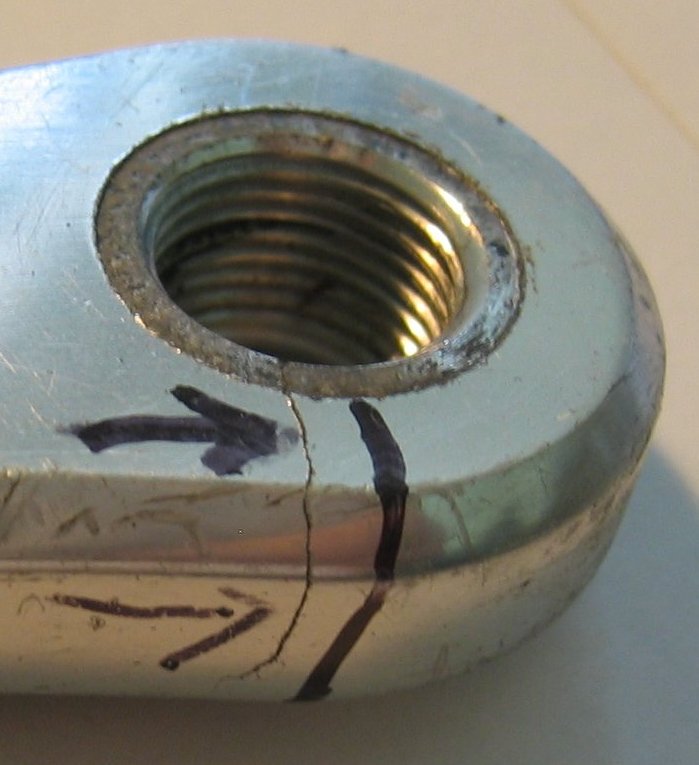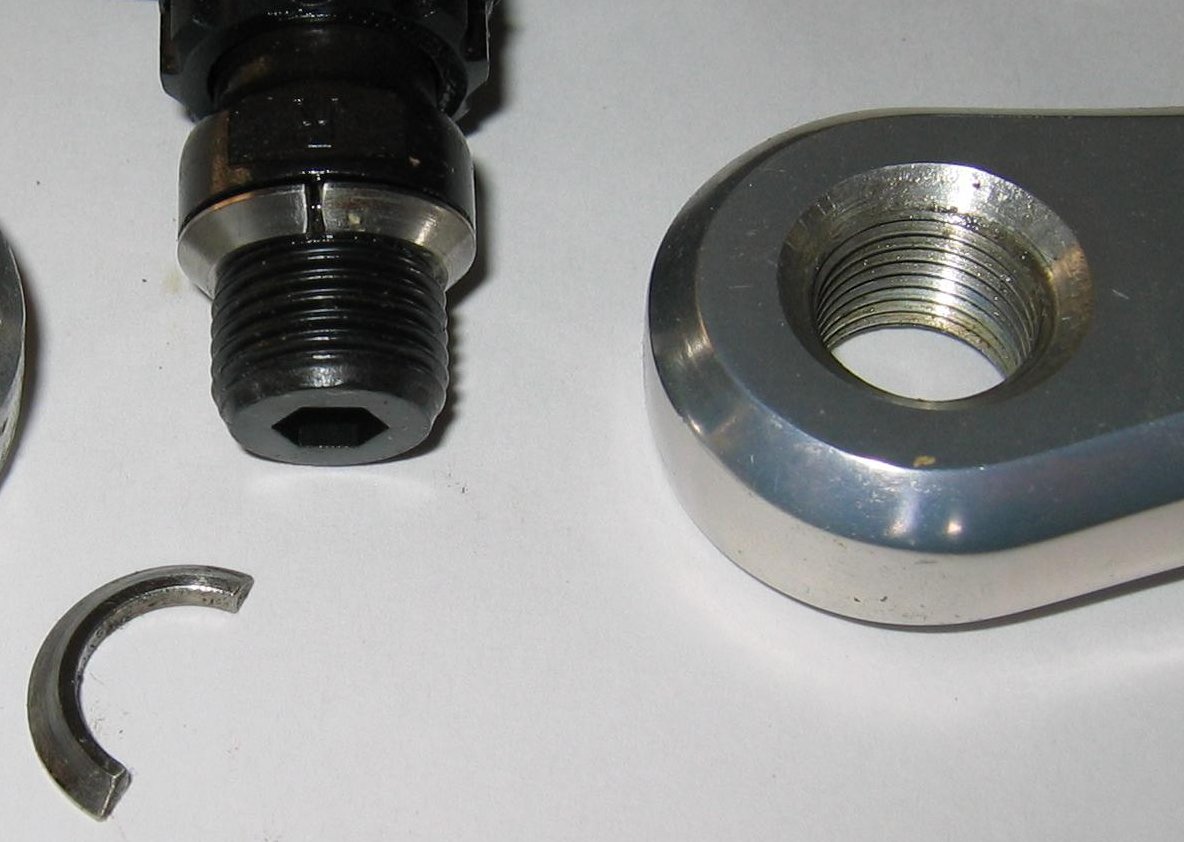
Most "bad" ideas have disappeared from common use. The pedal/crank joint, however, is standard — so standard that the only major variations are in the thread diameter and pitch.
The basic pedal/crank joint is like an ordinary bolt: the crank has a threaded hole, and the pedal has a threaded stub with a shoulter or flange that is tightened against the crank.
This joint is cheap to manufacture, but sometimes fails and occasionally dumps the rider, which can lead to serious injury.
The joint fails because pedaling forces are parallel to the crank, so only friction holds the pedal from moving on the crank. Under pedaling loads, the pedal moves slightly relative to the crank. Early riders noticed left pedals unscrewed, and "solved" the problem with a left-hand thread on the left crank and pedal. This does not stop movement, but movement no longer causes pedals to unscrew.
With aluminum cranks, the pedal eye cracks. These failures are not well-studied, but general properties of joints and materials are. The small motions wear away little pieces of aluminum that oxidize and becomes abrasive, and the abrasive is ground in to the crank, causing microscopic damage that eventually grows to a large crack.
Here is a crank that was caught before failing through. It shows several things that are typical, and which support the explanation above. First, note there is a "dent" where the pedal shoulder touches the crank. The crank was originally flat. The ring has gradually worn in to the crank — which shows there was motion (wear cannot occur without motion); wear leads to wear debris; aluminum oxidizes easily, and aluminum oxide is a standard industrial abrasive. Note also the crank has not yet cracked on the back, showing the crack started near the front and is cracking from front to back.

These failures are not common, but at the same time are not vanishingly rare. They tend to occur mostly for riders who ride a lot, push hard on the pedals, and keep the same parts for several years.
Even if you do not suffer these failures, you may still be offended that the cranks are overbuilt to work around a design defect. That is, with a better joint, the crank could be slightly lighter and more durable.
One solution is a joint which does not carry pedal loads through friction. Here is a retrofit designed and used by Jobst Brandt and built by Peter Johnson, using a 45° taper in the crank and a collet that bears on the non-threaded part of the pedal spindle:

Although the taper causes some hoop stress, the crank is already designed for some hoop stress from pedal threads. And, the major mode of failure was cracking from wear debris, which this design eliminates — cranks with this retrofit have already (2009) lasted several times as long as prior cranks of the same model.
A "production" solution would make the 45° taper as part of the pedal spindle. Although tapers are slightly more expensive than flats, the cost difference should be small and should be offset in part by the ability to use the same spindle left and right. The 45° taper would reduce some other pedal eye stresses, and might allow a crank that is both lighter and more durable.
Not all cranks can be retrofit for the new-style joint, but the crank shown above is a retrofit and has been more durable than several preceding non-retrofit cranks of the same brand and model, with the same rider and pedals. The above retrofit was performed using a milling machine, but it would be relatively cheap to make a retrofit tool that screws in the pedal threads.